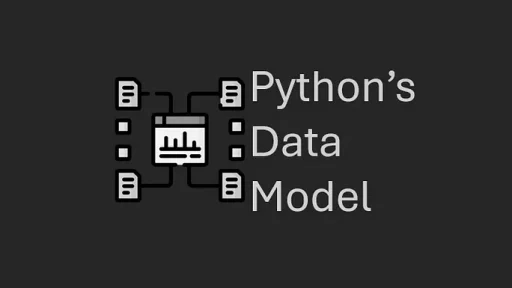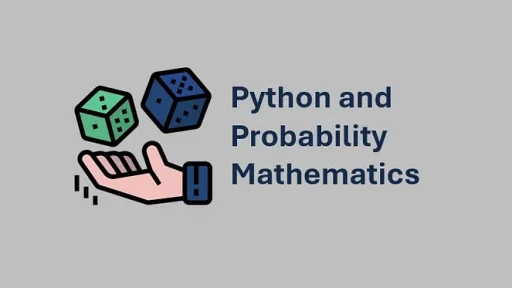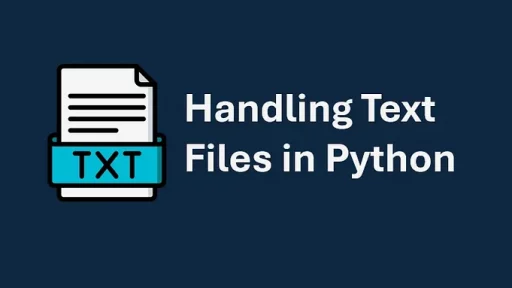Data serialization is the process of converting data into a format that can be stored or transmitted and then reconstructed later. JSON (JavaScript Object Notation) is one of the most popular serialization formats due to its readability and ease of use.
In Python, the json module provides robust support for working with JSON data. This article will guide you through using JSON in Python, complete with clear examples and specific file details.
What is JSON?
JSON represents data as key-value pairs. It supports simple data types like strings, numbers, and booleans, as well as more complex structures like arrays and nested objects. A typical JSON file might look like this:
{
"name": "Alice",
"age": 30,
"is_employee": true,
"skills": ["Python", "Data Analysis", "Machine Learning"],
"projects": {
"current": "Data Migration",
"completed": ["API Development", "Web Scraping"]
}
}Reading JSON Files
Start by saving the above JSON as a file named data.json in the root of your project directory — File: json_project/data.json
To load this JSON data into Python:
Script: json_project/read_json.py
import json
# Open and load the JSON file
with open("data.json", "r") as file:
data = json.load(file)
# Access elements from the loaded data
print(f"Name: {data['name']}")
print(f"Current Project: {data['projects']['current']}")Run the script:
python read_json.pyExpected Output:
Name: Alice
Current Project: Data MigrationWriting JSON Files
To save Python data structures as JSON, use json.dump. For instance, let’s create a script to write JSON data:
Script: json_project/write_json.py
import json
# Data to be saved as JSON
data = {
"name": "Bob",
"age": 25,
"is_employee": False,
"skills": ["Java", "Spring Boot", "DevOps"],
"projects": {
"current": "System Upgrade",
"completed": ["Automation", "Monitoring Setup"]
}
}
# Save data to a JSON file
with open("new_data.json", "w") as file:
json.dump(data, file, indent=4)
print("Data saved to new_data.json")Run the script:
python write_json.pyCheck the generated new_data.json file:
{
"name": "Bob",
"age": 25,
"is_employee": false,
"skills": [
"Java",
"Spring Boot",
"DevOps"
],
"projects": {
"current": "System Upgrade",
"completed": [
"Automation",
"Monitoring Setup"
]
}
}Working with Nested JSON
For more complex JSON data, you can access nested values by chaining keys or indexes. Update data.json to include deeper nesting:
Updated File: json_project/data.json
{
"name": "Alice",
"age": 30,
"is_employee": true,
"skills": ["Python", "Data Analysis", "Machine Learning"],
"projects": {
"current": "Data Migration",
"completed": ["API Development", "Web Scraping"],
"details": {
"API Development": {
"duration": "3 months",
"team_size": 5
},
"Web Scraping": {
"duration": "1 month",
"team_size": 3
}
}
}
}To access nested details:
Script: json_project/nested_json.py
import json
# Load the updated JSON file
with open("data.json", "r") as file:
data = json.load(file)
# Access nested data
api_details = data["projects"]["details"]["API Development"]
print(f"API Development Duration: {api_details['duration']}")
print(f"Team Size: {api_details['team_size']}")Run the script:
python nested_json.pyExpected output:
API Development Duration: 3 months
Team Size: 5Converting JSON Strings to Python Objects
Sometimes, JSON data comes as a string, such as from an API. You can use json.loads to parse JSON strings and json.dumps to convert Python objects to strings:
Script: json_project/json_strings.py
import json
# JSON string
json_string = '{"name": "Charlie", "age": 35, "skills": ["C++", "Rust"]}'
# Convert string to Python object
python_data = json.loads(json_string)
print(f"Name: {python_data['name']}")
# Convert Python object to JSON string
json_output = json.dumps(python_data, indent=2)
print(json_output)Accessing Keys
Keys in a JSON object can be accessed just like dictionary keys in Python. For instance:
import json
# Sample JSON
json_string = '''
{
"name": "Alice",
"age": 30,
"skills": ["Python", "Data Analysis"],
"projects": {
"current": "Data Migration",
"completed": ["API Development", "Web Scraping"]
}
}
'''
# Convert JSON string to Python dictionary
data = json.loads(json_string)
# Access keys
print(data["name"]) # Output: Alice
print(data["projects"]["current"]) # Output: Data MigrationIterating Over Keys
To loop through all keys in a JSON object:
# Looping through top-level keys
for key in data:
print(f"Key: {key}, Value: {data[key]}")Output:
Key: name, Value: Alice
Key: age, Value: 30
Key: skills, Value: ['Python', 'Data Analysis']
Key: projects, Value: {'current': 'Data Migration', 'completed': ['API Development', 'Web Scraping']}Checking for Keys
Before accessing a key, it’s good practice to check if it exists to avoid errors:
if "skills" in data:
print(f"Skills: {data['skills']}")
else:
print("Key 'skills' not found.")Listing All Keys
You can use .keys() to get all the keys in a JSON object:
# Get all keys in the JSON
keys = data.keys()
print(keys) # Output: dict_keys(['name', 'age', 'skills', 'projects'])For nested keys, you’ll need to access them individually:
nested_keys = data["projects"].keys()
print(nested_keys) # Output: dict_keys(['current', 'completed'])Adding or Removing Keys
You can add or remove keys dynamically in the Python dictionary representation of your JSON:
Adding a Key
data["department"] = "Data Science"
print(data["department"]) # Output: Data ScienceRemoving a Key
del data["age"]
print(data) # The 'age' key will no longer be in the dataReal-World Use Case: Extracting Keys
If you have a nested JSON and want to extract all keys (including nested ones), use recursion:
def extract_keys(obj, parent_key=""):
keys = []
for key, value in obj.items():
full_key = f"{parent_key}.{key}" if parent_key else key
keys.append(full_key)
if isinstance(value, dict):
keys.extend(extract_keys(value, full_key))
return keys
# Extract keys
all_keys = extract_keys(data)
print(all_keys)Output for the above JSON:
['name', 'age', 'skills', 'projects', 'projects.current', 'projects.completed']Thank you for reading this article. I hope you found it helpful and informative. If you have any questions, or if you would like to suggest new Python code examples or topics for future tutorials, please feel free to reach out. Your feedback and suggestions are always welcome!
Happy coding!
C. C. Python Programming
You can also find this tutorial at Medium.com


